Inside 49ers' new home, Levi's Stadium, a venue unlike any other

SANTA CLARA, Calif. -- Except for those two red foghorns hovering atop the north scoreboard very little of Levi’s Stadium, the new home of the San Francisco 49ers, resembles Candlestick Park. But scarcely anything about Levi’s Stadium reminds you of any other venue in the NFL.
HNTB -- the architects behind the new $1.2 billion 68,500-seat venue 39 miles south of Candlestick Park in Santa Clara and about 30 feet from the 49ers’ team headquarters -- designed something different, creating a stadium with the most lower-bowl seats in the NFL, stacking all the suites in a hotel-like structure on the west side, fully exposing the entirety of the concourses and integrating the high-tech amenities you’d expect from a stadium that features views of some of the world’s most influential tech company headquarters.
Tim Cahill, HNTB architect on the job since before it even had a home, says stacking suites was the plan from the start. Cahill and colleague Scott Capstack designed a hotel-like glass-front four-story building on the west side, placing all 174 suites into three levels, putting the press and coaching needs on the fourth floor and creating some crazy-unique rooftop seating next to a green roof which caps off the building. The glass front fully opens, as it does in clubs throughout the venue, to give an open-air feel throughout.
RANKINGS: QBs | WRs |TEs |Safeties|CBs|DTs|Pass rushers|LBs | OL
Designing the hotel-like building removed the need to separate the lower and upper bowls with a ring of suites, as traditionally seen, allowing Cahill to split the lower deck and put 44,000 fans in the lower bowl, the largest number in the NFL.
“By splitting the concourse we can pull people closer and bring the whole stadium closer,” Capstack told SI.com.
Those two concourses are some of the widest you’ll see in the NFL. And akin to a baseball stadium, the concessions face toward the field, offering fans a chance to congregate near the food without separating from the action. The connected concourse travels about 3/4s of the stadium, with an exterior ring -- Capstack dubs it the “expressway”-- of concourse circling the entire venue.
GALLERY: Inside Levi's Stadium
Inside San Francisco 49ers' new home, Levi's Stadium
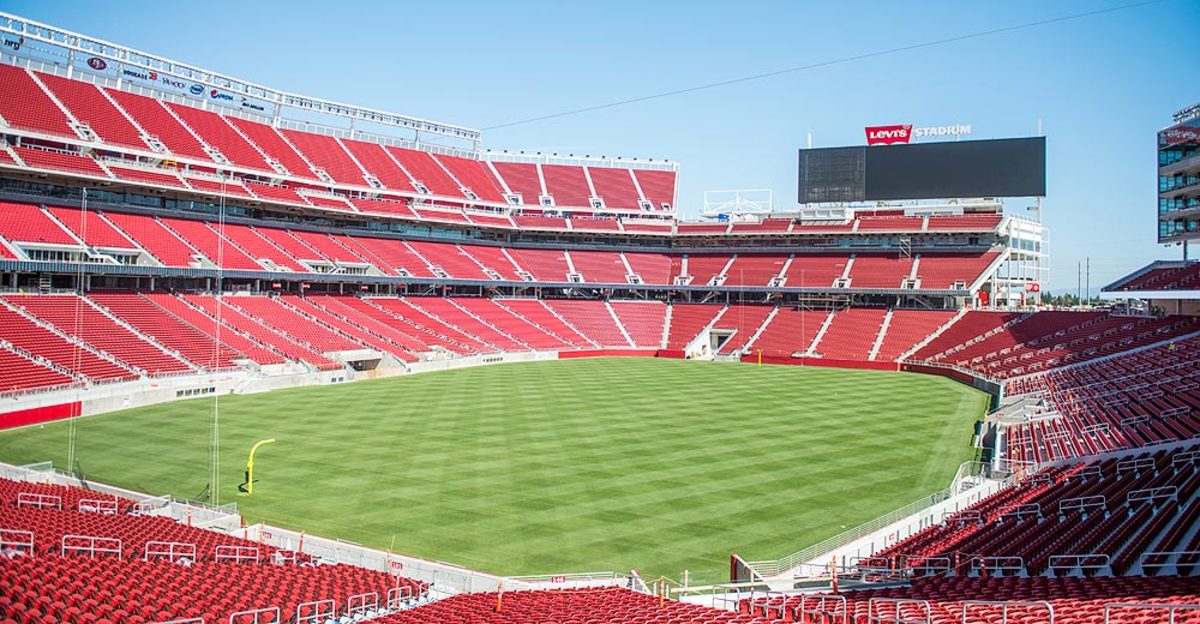
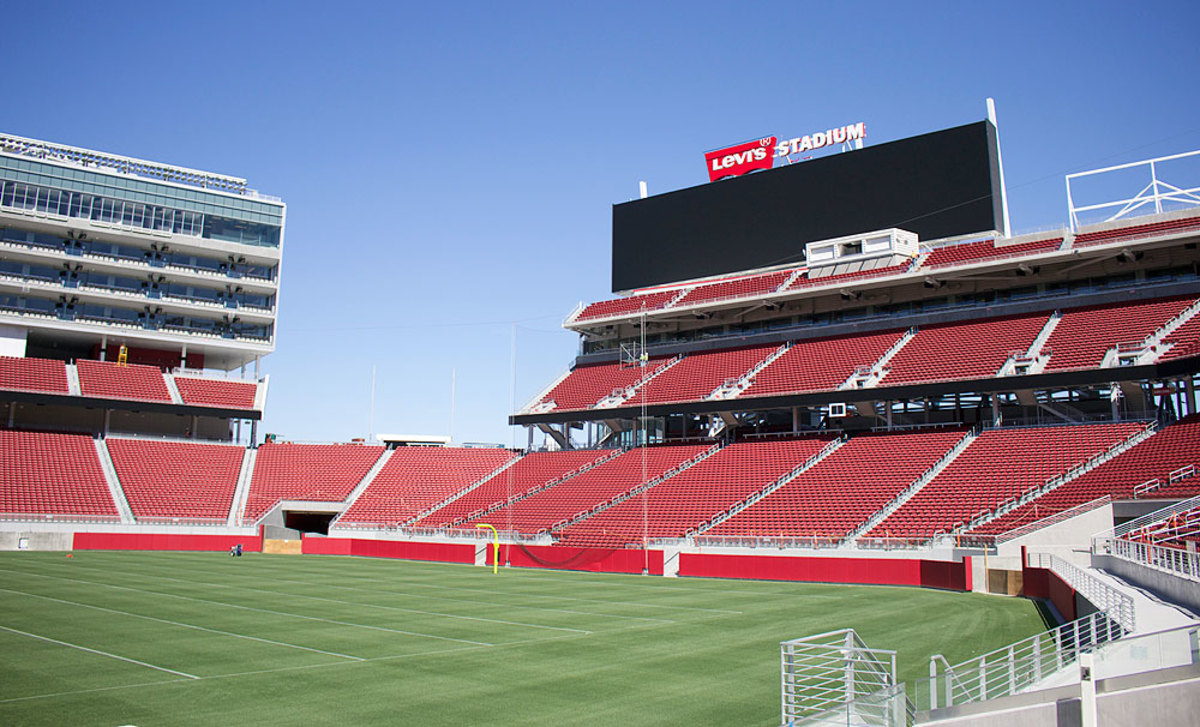
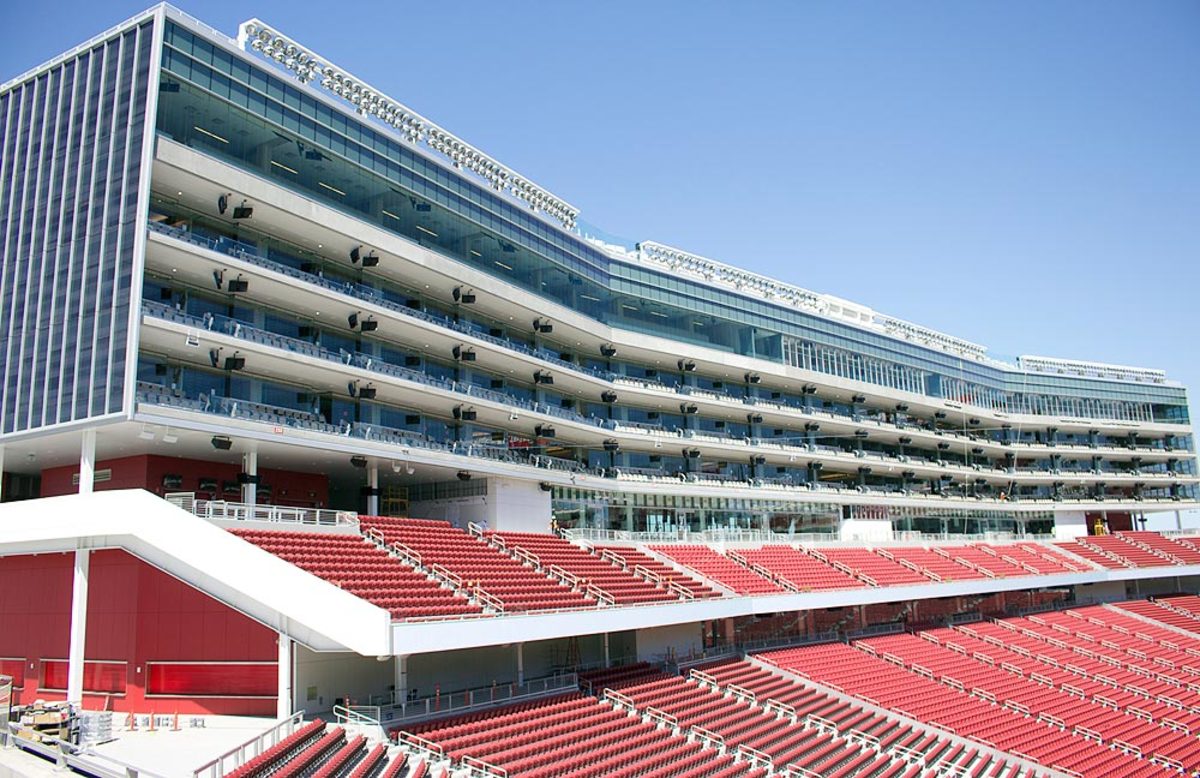
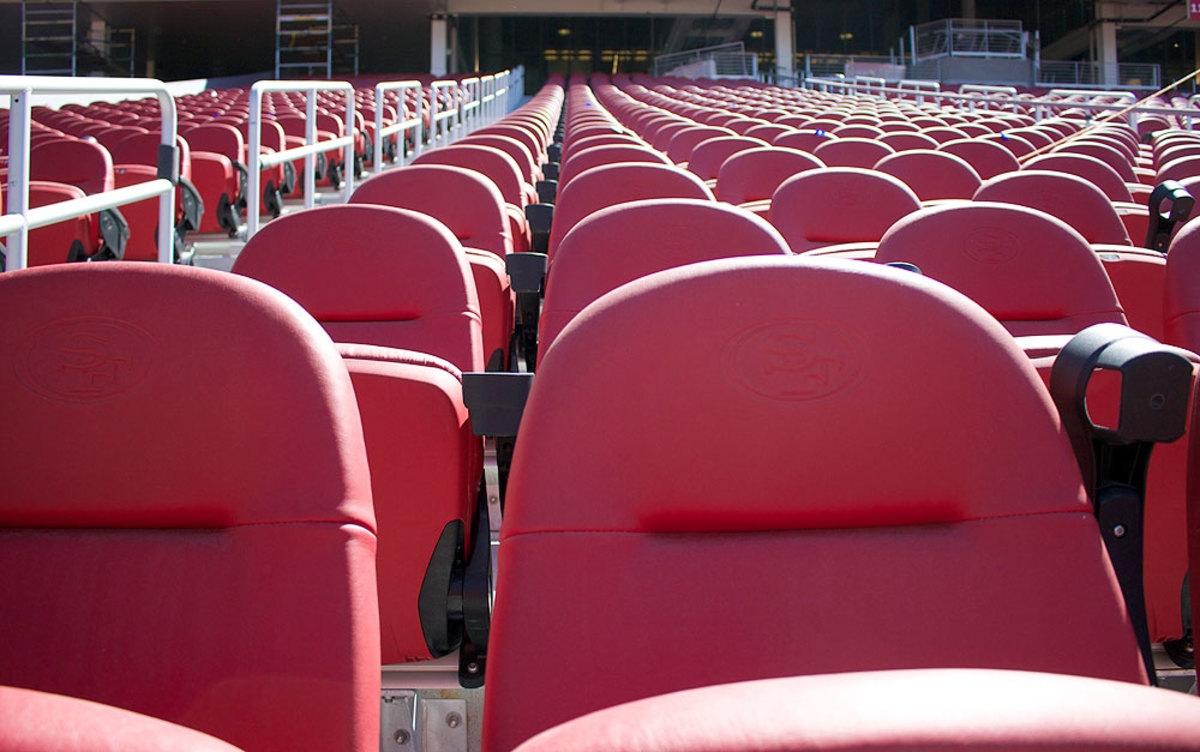
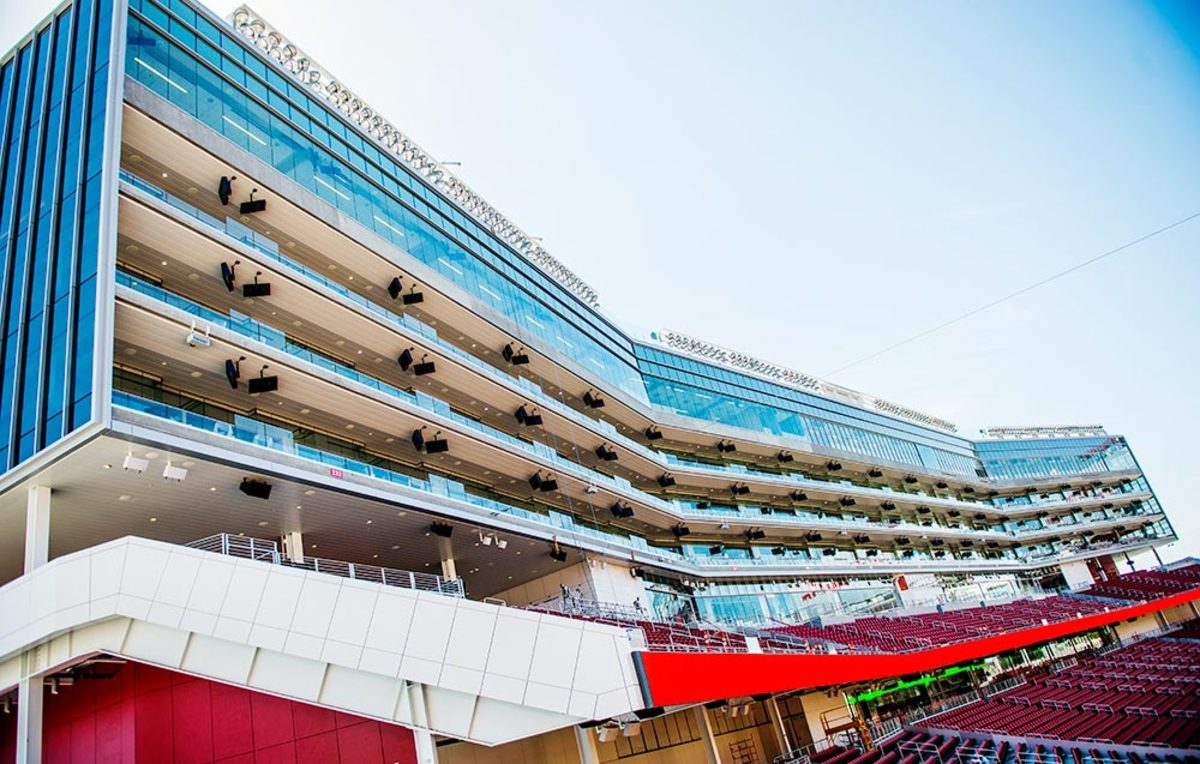
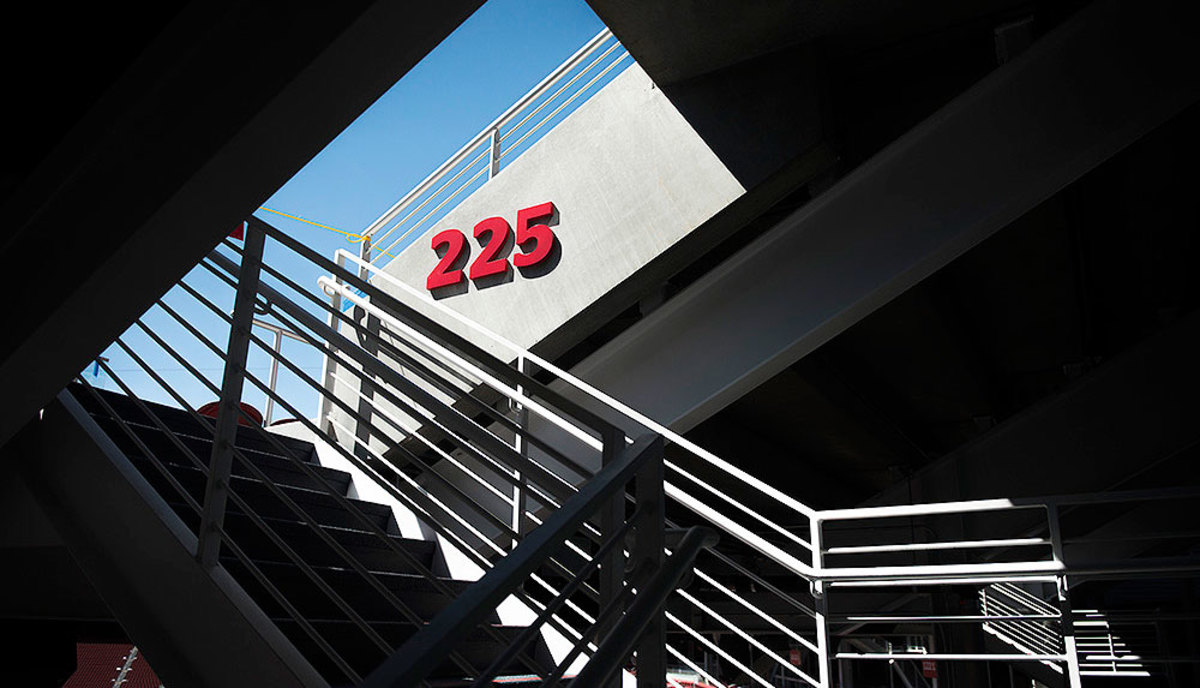
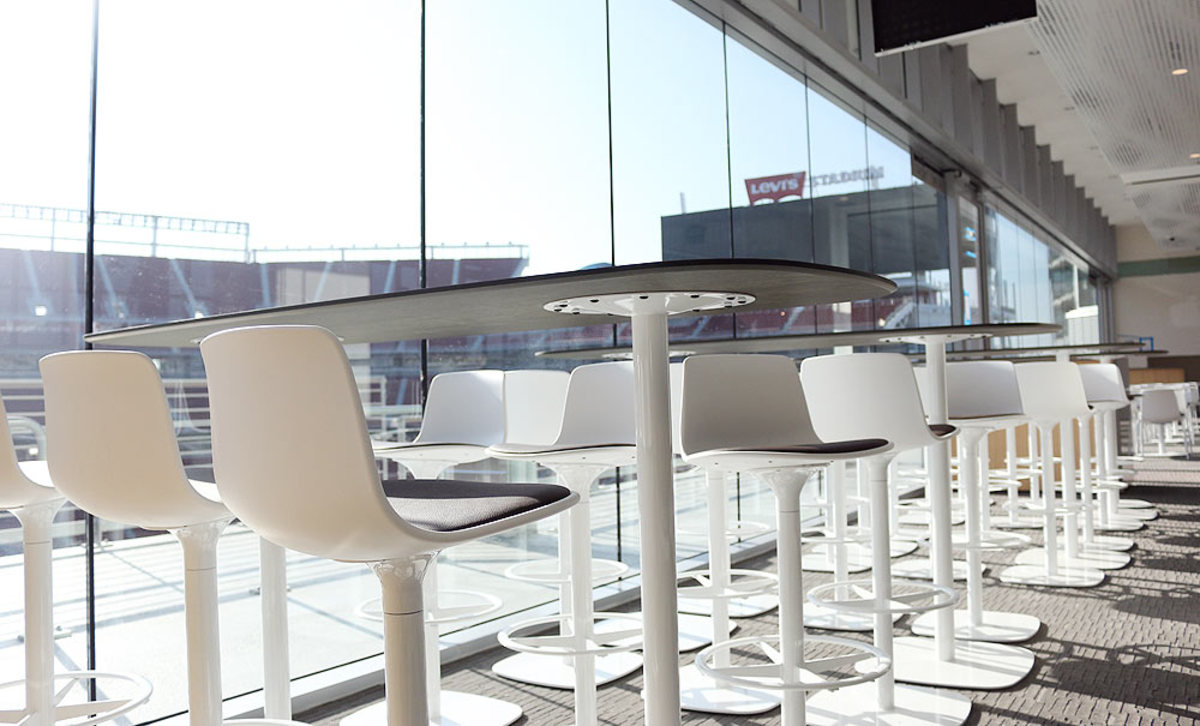
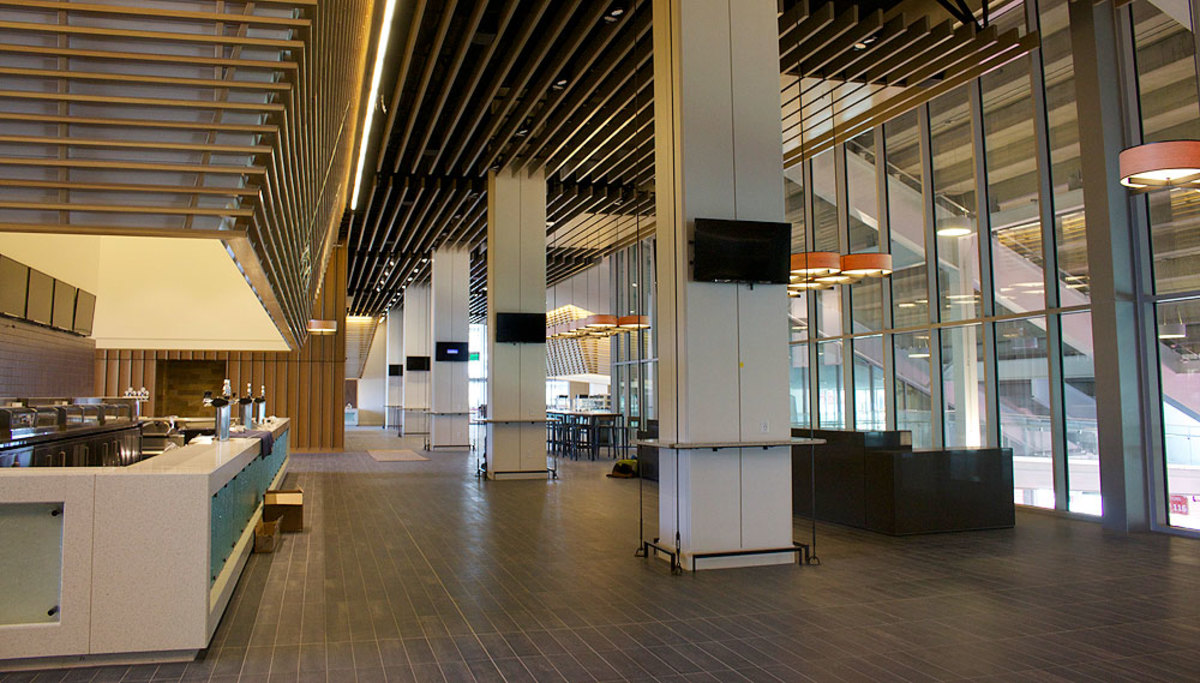
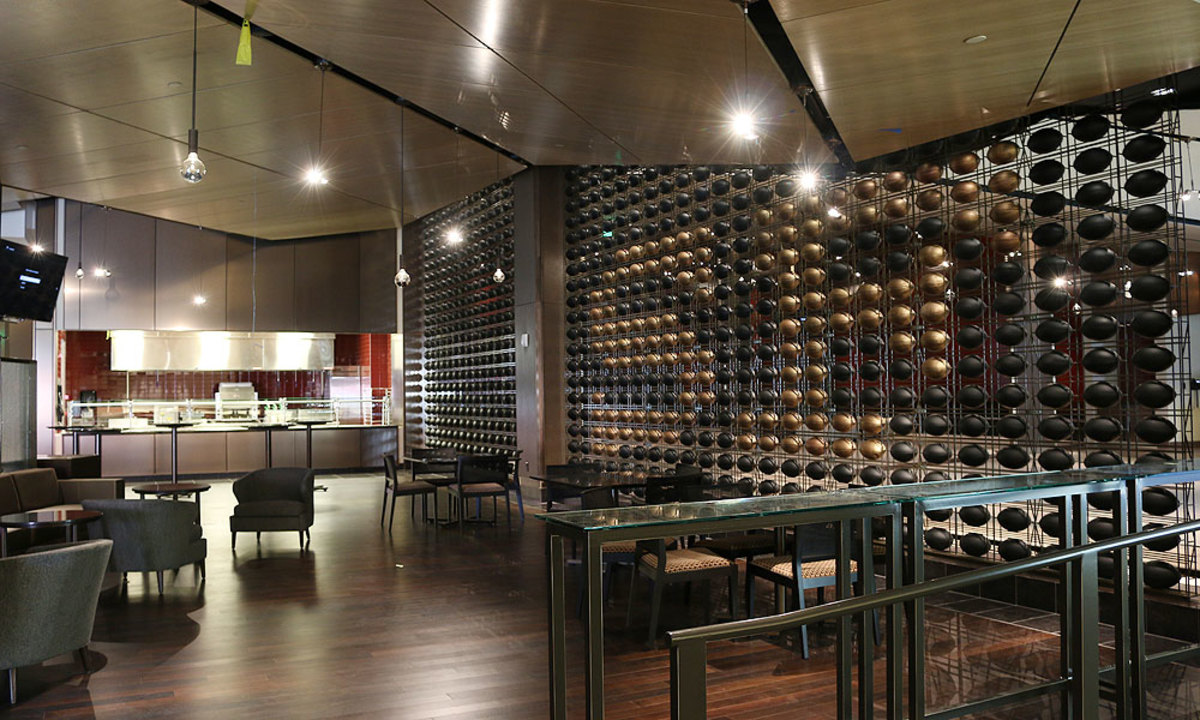
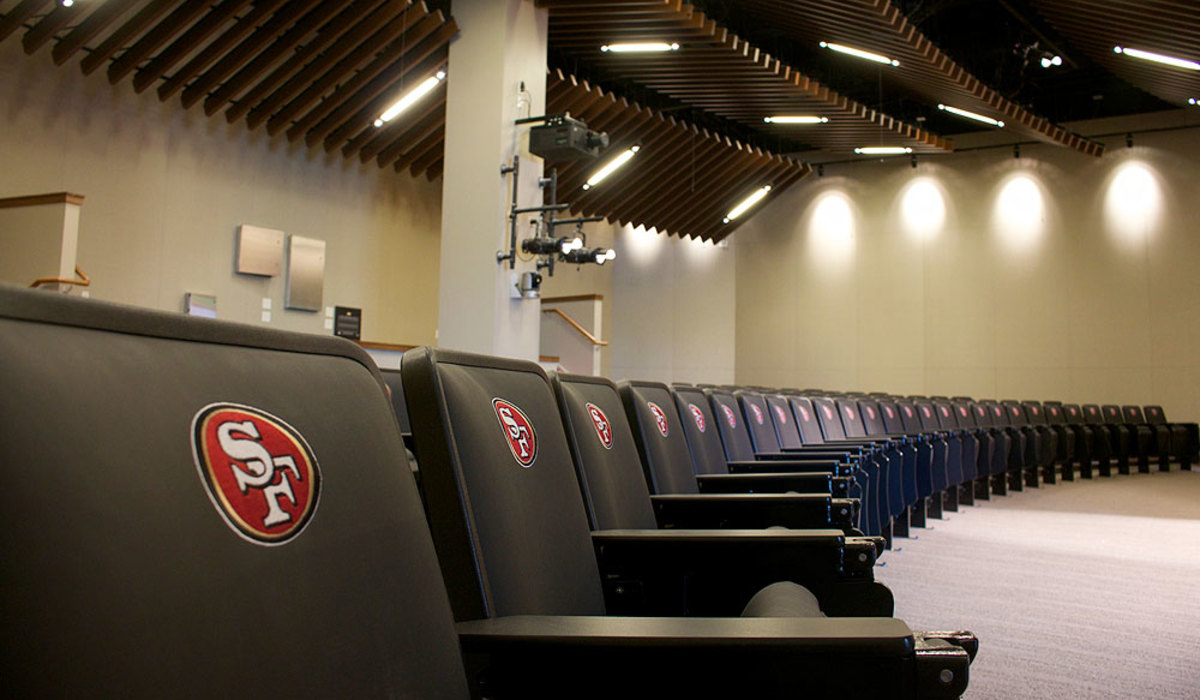
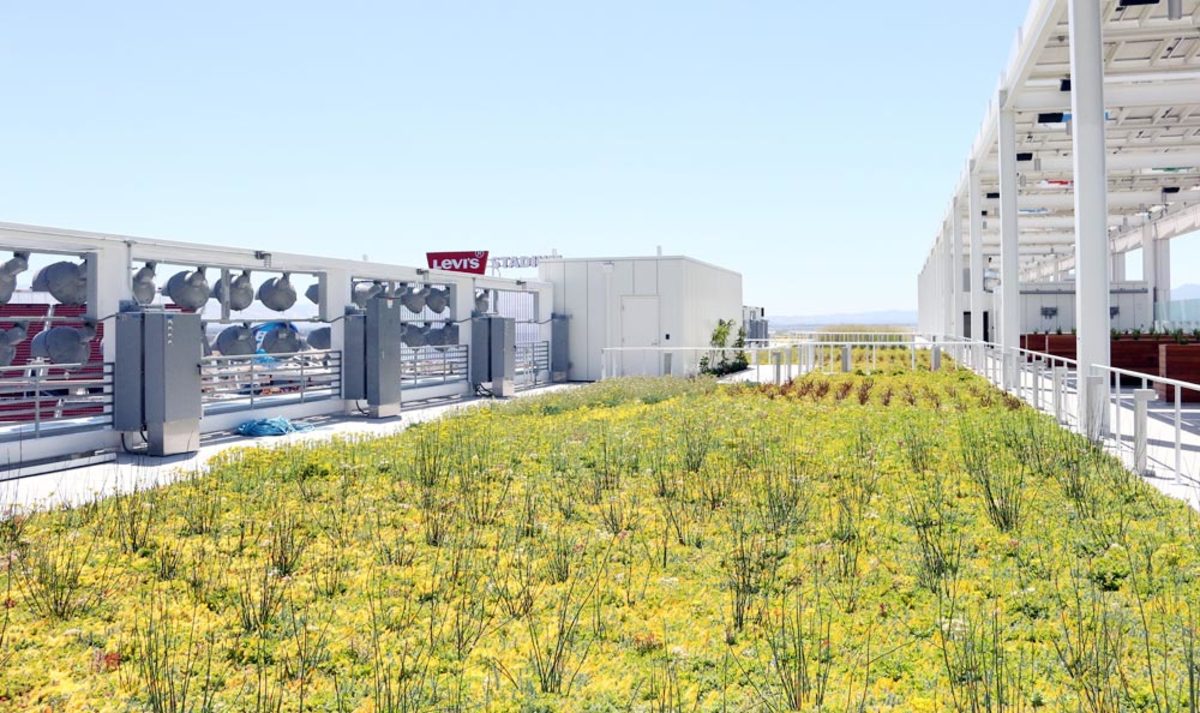
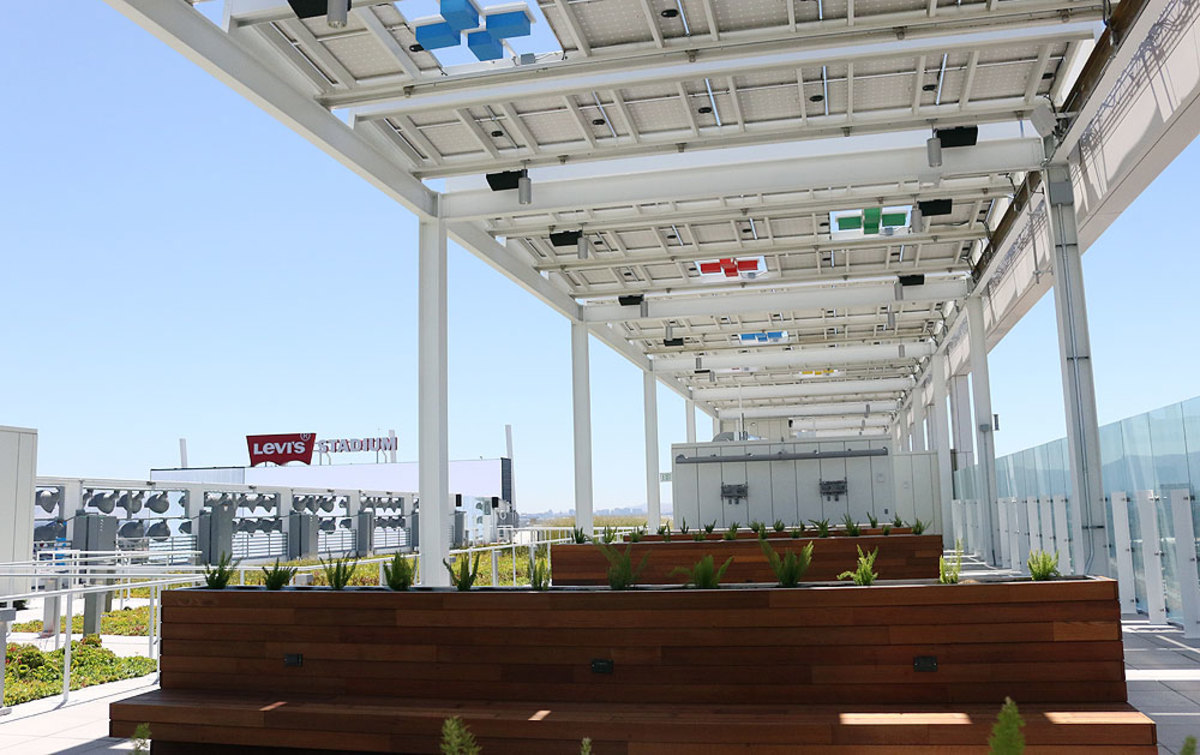
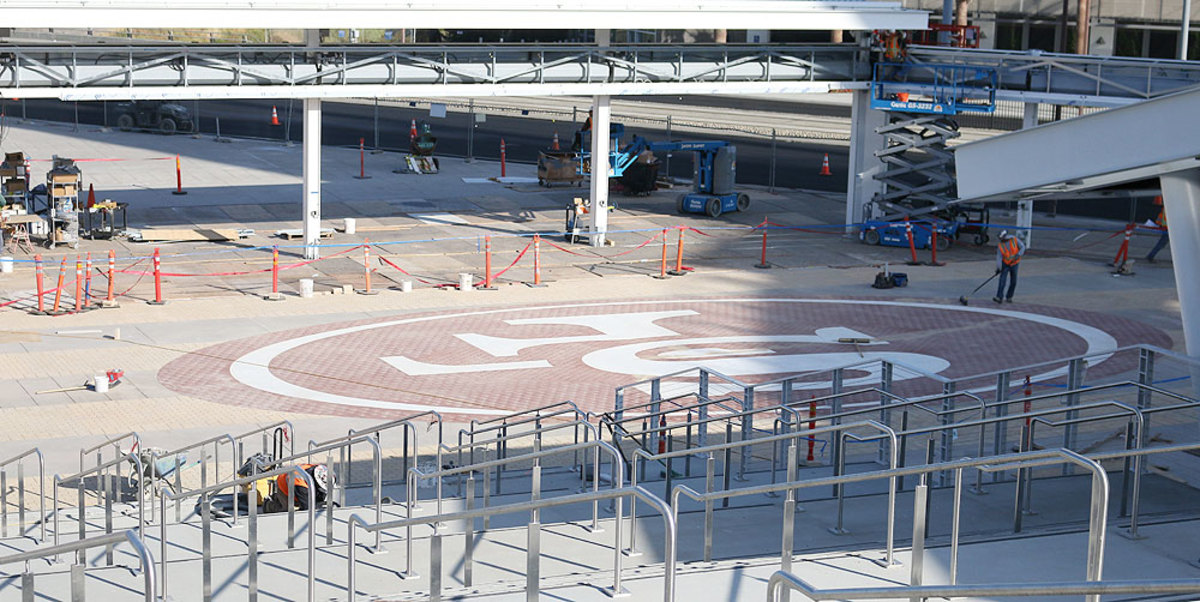
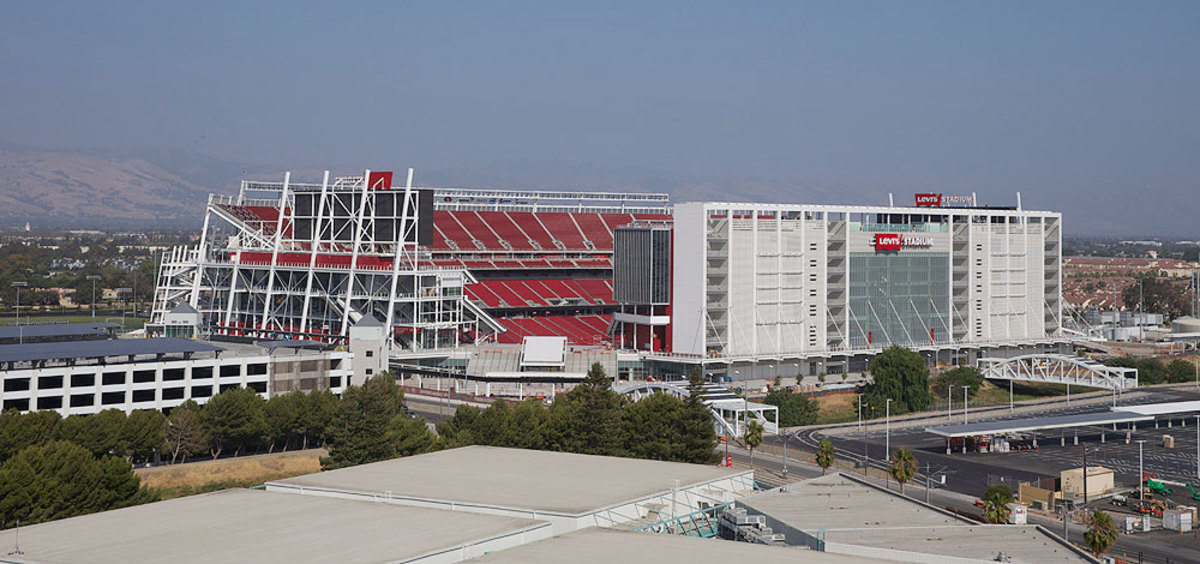
With views toward the field, Levi’s Stadium also has views out. Real ones, not just marketing-speak ones, with the hills surrounding the stadium popping up and downtown San Francisco’s skyline visible from the top corner of the venue.
Due to the high water table in Santa Clara, Cahill raised the exposed steel building -- the 49ers didn’t want an exterior skin -- with specially designed X-bracing for seismic control (everyone remembers the ’89 earthquake that disrupted the Bay Area World Series), placing the first of the two concourses 30 feet up. This allowed them to place all the services on the ground floor near the non-public side of the building and provided ample space for the 49ers to glass-in an oversized team store and magnificent 20,000-square-foot museum with 150 artifacts on the street level. A year-round restaurant and television studio also sit at street level.
Cahill and Capstack designed Spanish-style staircases on the northwest and southwest corners to get fans up to the raised concourse, and the majority of fans will enter the site from the north over three new white steel pedestrian bridges spanning San Tomas Creek. Entrance plazas will not only help move crowds into the venue, but double as gathering locations with vending options during the game.
Once inside, fans can see Cahill’s original plan, which includes the C-shaped bowl facing the suite tower in a Roman amphitheater-style design.
Located under the seating bowl at the 50-yard-line, one of the more exclusive locations in the venue, the BNY Mellon club -- one of the five clubs and part of the 9,000 club seats -- will give patrons a college-style experience, with the 49ers players walking through the club on their way to the field. While the majority of the club rests below the seats, patrons will move onto the field and up into the stands to find their seats.
Each of the five clubs was created to offer use year-round for special events and designed in a different local theme and indigenous wood, featuring some of the over 200 pieces of original artwork commissioned for the building or 49ers photos.
Jack Hill, 49ers project manager on Levi’s Stadium, said the tower also allowed the team to have all suites and clubs between the end zones. “Now we have three suites on the 50 as opposed to one,” told SI.com. “They are better seats.” Better suites equals more revenue.
For the 50,000-plus fans not watching from a club seat, though, Capstack said club-style amenities fill the venue. All Centerplate-run concessions feature “live-cooking” kitchens and similar style local offerings, no matter if located in a club or concourse. A 25-beer tap room on the main concourse will attract visitors and the upper deck end zones each feature club-style party decks directly below the 200 feet by 48 feet scoreboards, one sponsored by Budweiser and the other Pepsi. The Budweiser deck, with a nice view of the roller coasters at next-door California’s Great America amusement park, has a wide offering of beverages planned.
“You can see the game from so many different vantage points,” Capstack said. “We made for a lot of people-watching opportunities with all of these pseudo-club spaces even if you don’t have a club seat.”
The scoreboards, the highest points of the stadium, rise 188 feet, the tallest allowed by the FAA as Levi’s Stadium sits directly below the San Jose airport’s flight path. Southwest Airlines -- one of the largest carriers to the airport -- will get plenty of free advertising that way.
The stadium’s other high-flying location is the 27,000-square-foot green roof atop the suite tower that includes 16 different species of plants. The roof can open like a club-style venue offering fans the ability to mingle near the stadium lighting, an experience unlike any other in sports.
Expect plenty of sustainable aspects to the roof. Along with helping filter water, the roof holds an 18,000 square foot solar terrace that assists with housing 1,162 photovoltaic panels used in the building and on the three pedestrian bridges. Levi’s Stadium plans to score LEED Gold status, the first new professional football stadium to reach it. On game days, the stadium will achieve net-zero energy with the onsite power generation staying in the internal grid.
The sustainability moves from the suite tower down through to the field where the Bandera Bermuda turf grass requires up to 50 percent less water than the average turf variety in the Bay Area. Recycled water will account for 85 percent of all water used in the stadium. The suite tower design also allows for an efficient mechanical design.
But it wouldn’t be Silicon Valley without technology. Al Guido, the 49ers chief operating officer, told SI.com a new in-stadium app will give fans not only high-speed connectivity, but also access to information and real-time video.
Within the stadium, 2,000 Bluetooth low-energy beacons will provide access to static maps and stadium information. In-app food ordering will allow for in-seat food delivery for every single seat and the team will have over 1,000 runners to handle the demand. But if you get up, you can find charging stations in the drink rails.
From mobile ticketing to GPS locators telling you where the nearest concession fare, beer or restroom is, the “hero feature” of the app, Guido said, is the ability to offer in-game replays and video content.
“You might not have seen if he got two feet inbounds and we can deliver three to five replays and angles within five seconds,” he said of the in-stadium broadcast featuring 13 stadium cameras.
To keep this all working, Levi’s Stadium will have over 400 miles of data cable, including 70 miles of cable to support WiFi, with an access point under every 100 seats. In all, more than 12,000 physical network ports and 1,000 WiFi access points have been installed, supporting a bandwidth 40 times larger than any known U.S. stadium and plenty of IPTV throughout the 4K facility.
Capstack said with the exposed steel, they had to carefully fit all stadium systems within the alignments of the structure to keep the aesthetic clean, but have future-proofed by having the infrastructure contain room to increase cable capacity.
With the stadium officially opening Aug. 2 for a MLS game, Guido said it is a vision brought to life. “Four years ago this was a building on a piece of paper,” he said. “From blueprint to seeing what it is today is a proud moment.”
Savor the foghorns if Candlestick had any aspect you enjoyed, otherwise prepare for a new NFL stadium experience. A venue exposed, connected and stacked.
Tim Newcomb covers stadiums, design and gear for Sports Illustrated. Follow him on Twitter at @tdnewcomb.
